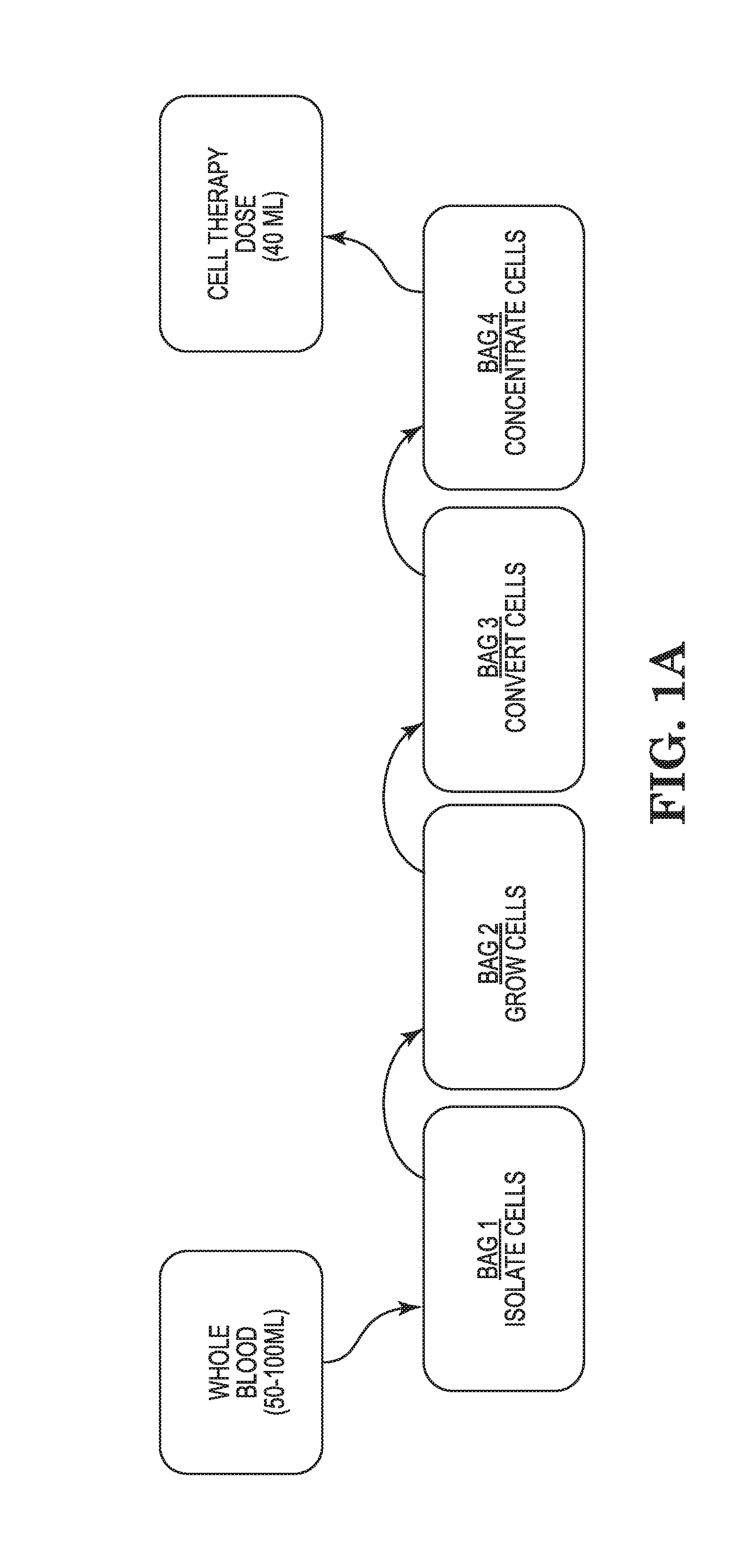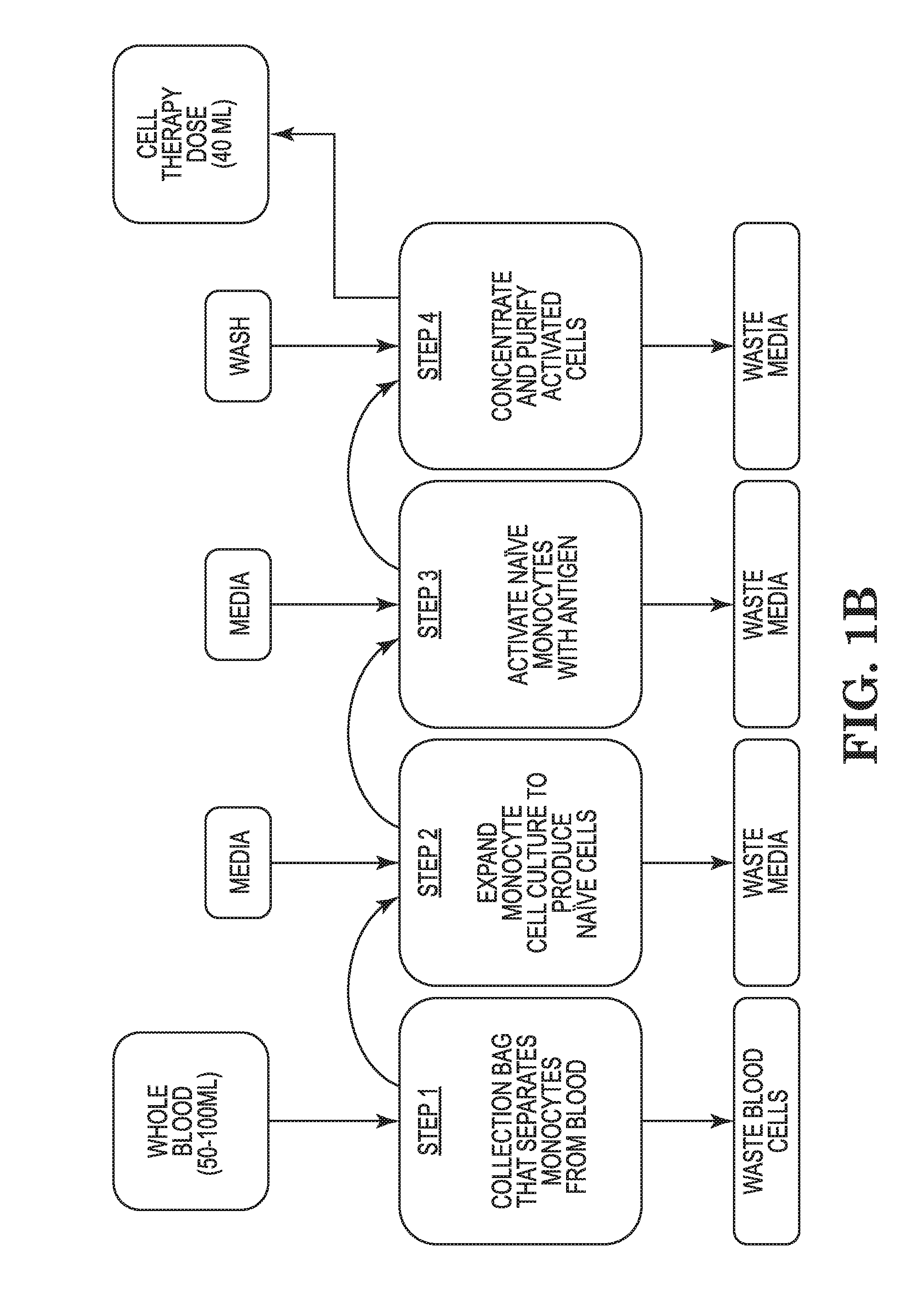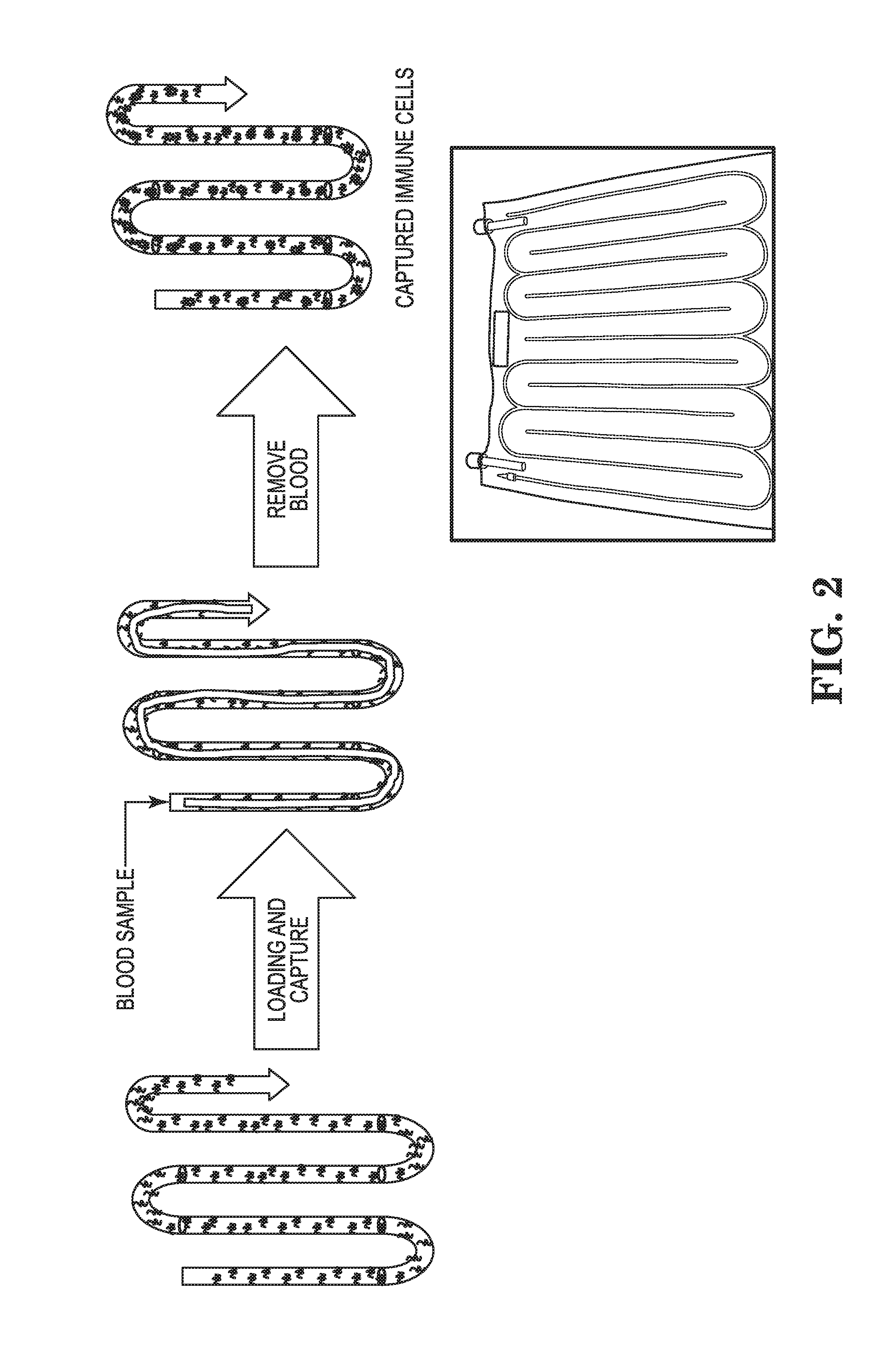Capture system of cells and methods
a cell and cell technology, applied in the field of cell capture system and methods, can solve the problems of high yield and difficulty in purity, and achieve the effect of strong interaction
- Summary
- Abstract
- Description
- Claims
- Application Information
AI Technical Summary
Benefits of technology
Problems solved by technology
Method used
Image
Examples
example 1
Estimation of Numbers of Isolated Monocytes
[0188]The present example provides an estimation of the number of monocytes that are isolated in embodiments of the disclosure.
[0189]Given that Tube: R=0.5 cm, L=1.2 m=>V=94 mL, S=3.8*10−2 m2
[0190]One monocyte has a radius about 7 μm. Then, the average surface it will cover if it is fixed is 1.5*10−10 m2. The maximum number of monocytes that can be captured on the tube surface is 2.5*108. In an exemplary 94 mL of blood, there are 7.5*107 monocytes (assuming a concentration of 8*108 monocytes / L in an average blood sample). Assuming a cell capture efficiency of 25%, a release of 80% and a final viability of 80%, then around 1.2*107 viable monocytes would be isolated. In certain aspects, 106 to 107 monocytes are needed for processing a dendritic cells vaccine.
example 2
[0191]This example concerns surface functionalization and protein immobilization on fluorinated ethylene propylene (FEP) as an example of a material of which a container is comprised or has a wall prepared therewith. In some embodiments, immobilization of protein can be performed by two distinct methods: physical adsorption and chemical conjugation. All studies described in this example were performed with one of two types of protein (Avidin and Neutravidin) on three different FEP film surfaces (Untreated, C-Treated and C-Treated oxidized). Examples of protocols to demonstrate adsorption and chemical conjugation as well as film oxidation are provided herein below.
[0192]Adsorption
[0193]The adsorption embodiment involves the physical adsorption of protein on a surface by attractive forces, such as electrostatic, hydrophobic and hydrophilic interactions, or Van-der-Waals forces. This method is straightforward and the adsorption is spontaneous, only taking a few secon...
example 3
Exemplary Experimental Procedure
[0335]Experimental
[0336]The grafting polymerization onto FEP films was achieved via plasma activation followed by free radical polymerization in solution. The methodology for the grafting polymerization is described in the following steps; (i) cleaning the film, (ii) treating the film in the low pressure plasma system, (iii) polymerization in solution (iv) cleaning of the film and (v) characterization.
[0337]Cleaning of the Films
[0338]The film was cut and then washed in acetone, rinse with DI water, dry in air and store inside a film of aluminum foil. Later the cleaning process included washing first the film with soap, rinse with water and then rinse with acetone. The acetone at the end helps to dry the excess of water from the surface.
[0339]Plasma Treatment
[0340]The film is placed in the bottle and adhered with double side tape if they are concerns with being activated in both sides. Films of 4″×5″ fit the side of the bottle and no tape is used in th...
PUM
| Property | Measurement | Unit |
|---|---|---|
| volume | aaaaa | aaaaa |
| thickness | aaaaa | aaaaa |
| thickness | aaaaa | aaaaa |
Abstract
Description
Claims
Application Information
 Login to View More
Login to View More - R&D
- Intellectual Property
- Life Sciences
- Materials
- Tech Scout
- Unparalleled Data Quality
- Higher Quality Content
- 60% Fewer Hallucinations
Browse by: Latest US Patents, China's latest patents, Technical Efficacy Thesaurus, Application Domain, Technology Topic, Popular Technical Reports.
© 2025 PatSnap. All rights reserved.Legal|Privacy policy|Modern Slavery Act Transparency Statement|Sitemap|About US| Contact US: help@patsnap.com



